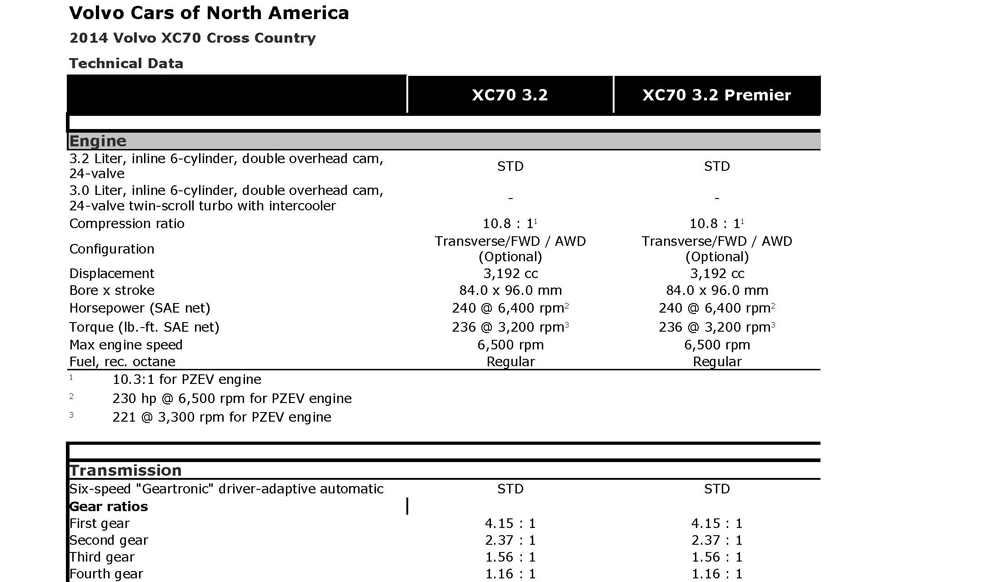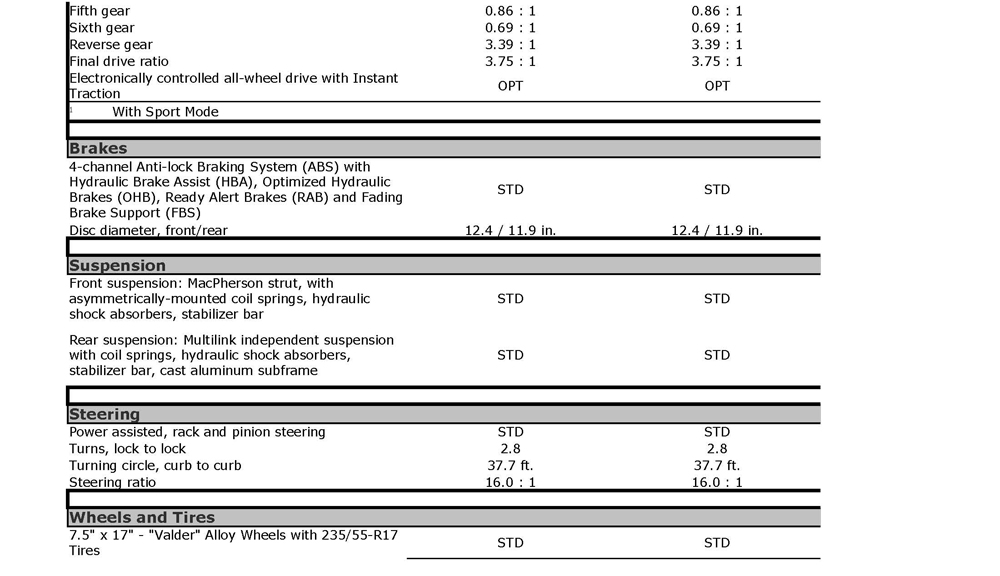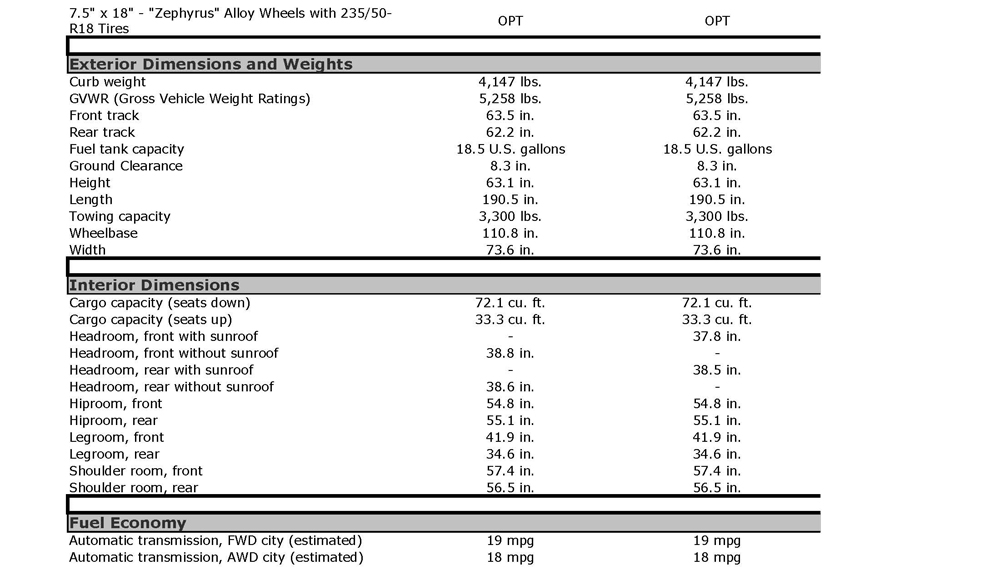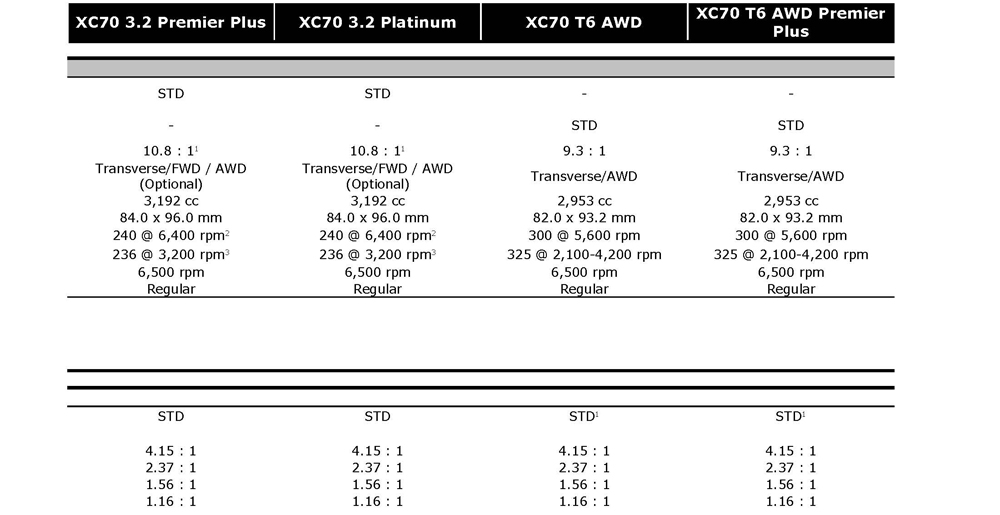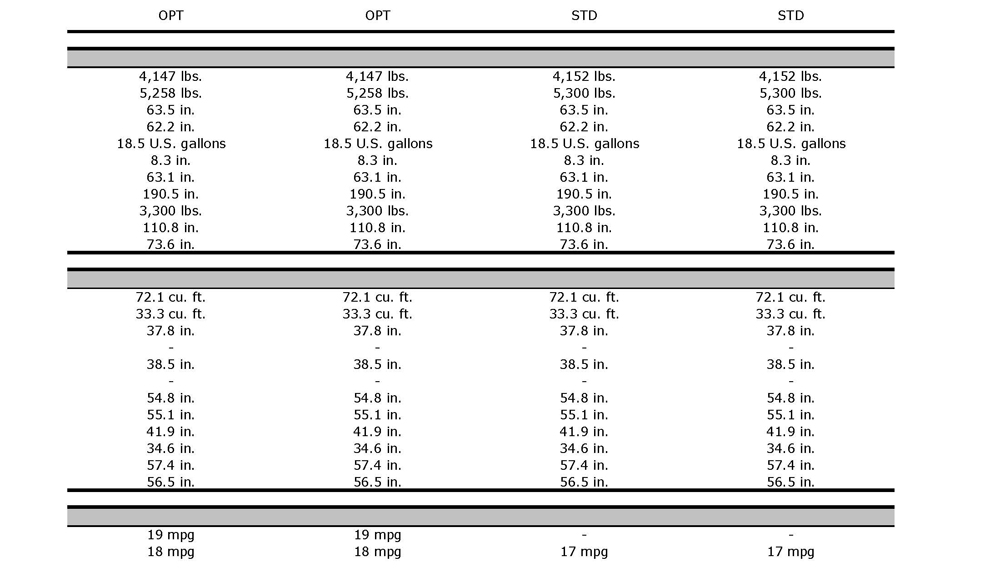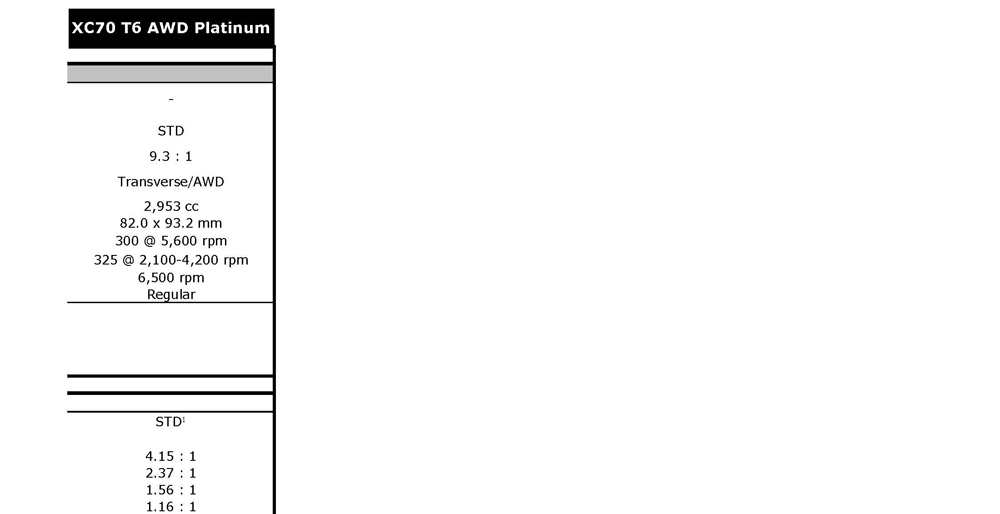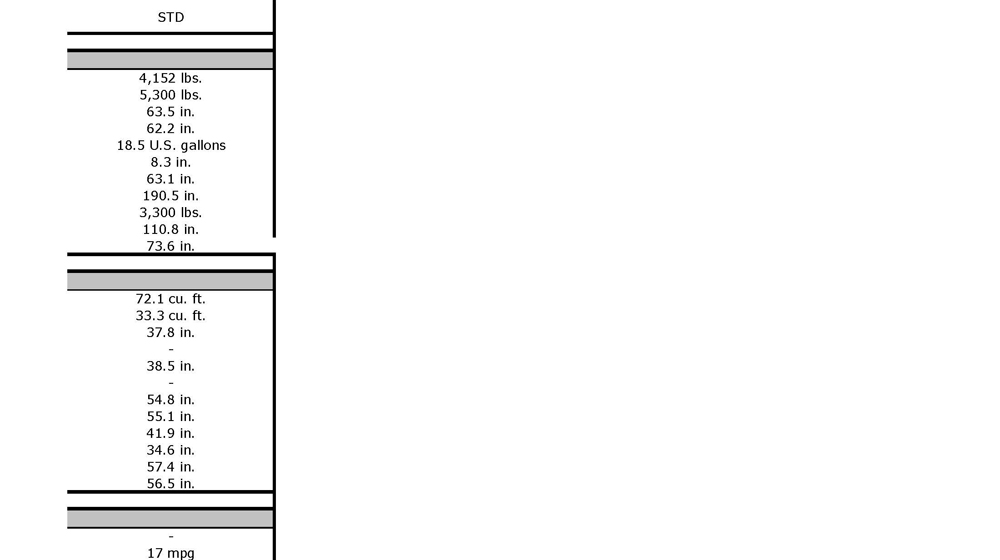
Volvo unveiled a major renewal of its current model lineup at the New York International Auto Show, amounting to the most extensive development of existing models in the Scandinavian automaker’s history. Featured among them are the XC70 crossover.
“The new features in the new Volvo XC70 are based on our human-centric approach, which has been a Volvo hallmark for more than 85 years. They take the elegant sophistication of our largest models to a new level,” says Lex Kerssemakers, Senior Vice President, Product Strategy & Vehicle Line Management at Volvo Car Group. He continues: “We pave the way for our future model lineup by bringing the models visually closer to each other. The renewal is one of the most extensive in our history, with the main focus on improved quality and attention to detail.”
The new Volvo XC70 – rugged sophistication for all-terrain adventures
Volvo Cars paved the way for a totally new segment with the V70 Cross Country in 1997. “Our main focus in the continuous development of the XC models has been to create a very comfortable on-road car with capable, off-road potential. The rugged and refined contemporary look reflects the XC70’s underlying strength and capability,” says Lex Kerssemakers.
A number of new exterior design cues sharpen the XC70’s contemporary road presence. These include a front grill with a bold, wider proportion, a new bigger ironmark, and details such as the Daytime Running Lights and added matte silver touches.
“Our aim is to emphasize the luxurious feel with a more powerful stance. The XC70 should look perfectly at home in any environment, whether it’s in the middle of the open country or a country club car park,” says Fedde Talsma.
The XC70 also features improved off-road design cues such as skid plates that protect the car on really uneven surfaces. The protective black below the belt line now extends to surround the front fog lights giving them a purposeful, functional feel. The rear lights have also been redesigned.
The rear seats can be folded down in three 40/20/40 segments. Fold all of the rear seats flat and the load space grows from 20.3 to 56.5 cubic feet. Another human-centric detail is the power-operated tailgate. The rear seat can integrate double two-stage child seats – booster cushions that offer children from the age of 3 and up a comfortable and safe ride height.
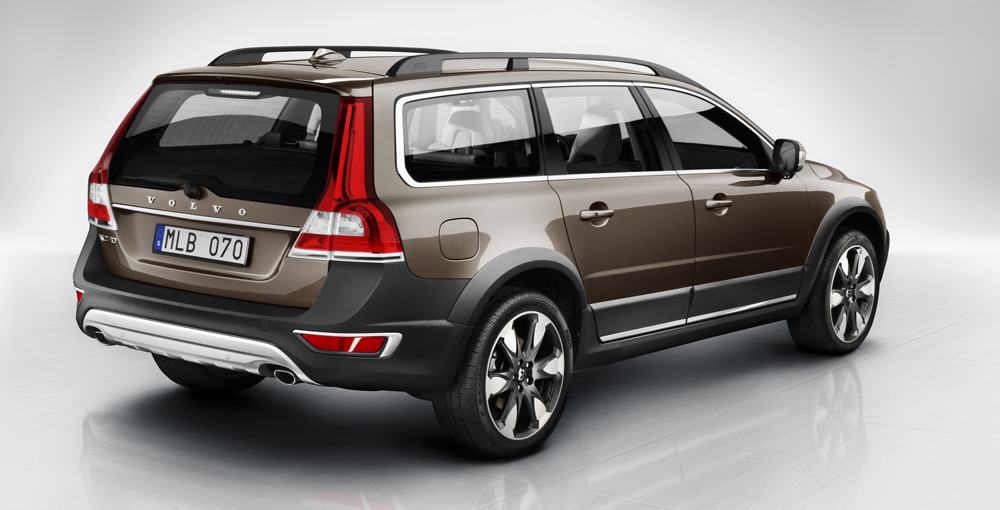
Enhancements for the new XC70
Sensus Connected Touch – connectivity on a new level
Sensus is the name Volvo uses for all its HMI (Human Machine Interface) functionality and the all-new Sensus Connected Touch is the latest addition.
It enables connectivity and Internet in the car and turns the 7-inch display into a state-of-the-art infrared, beam-scanned touch screen that can be used even when wearing gloves – a world first in cars and handy in winter! Connection is made either via a car-mounted 3G/4G dongle or the driver’s mobile phone.
The user has access to full Internet browsing (except when driving), Internet streaming of music, Internet radio (TuneIn Radio) with thousands of channels from all over the world, on-line (Google) Map and Search, Embedded Connected 3D navigation with online traffic info, Free Parking locator, weather information, a number of native and web applications, App Store for new functions and updates as well as a Volvo retailer locator.
It is also possible to share a WiFi network with everyone in the car.
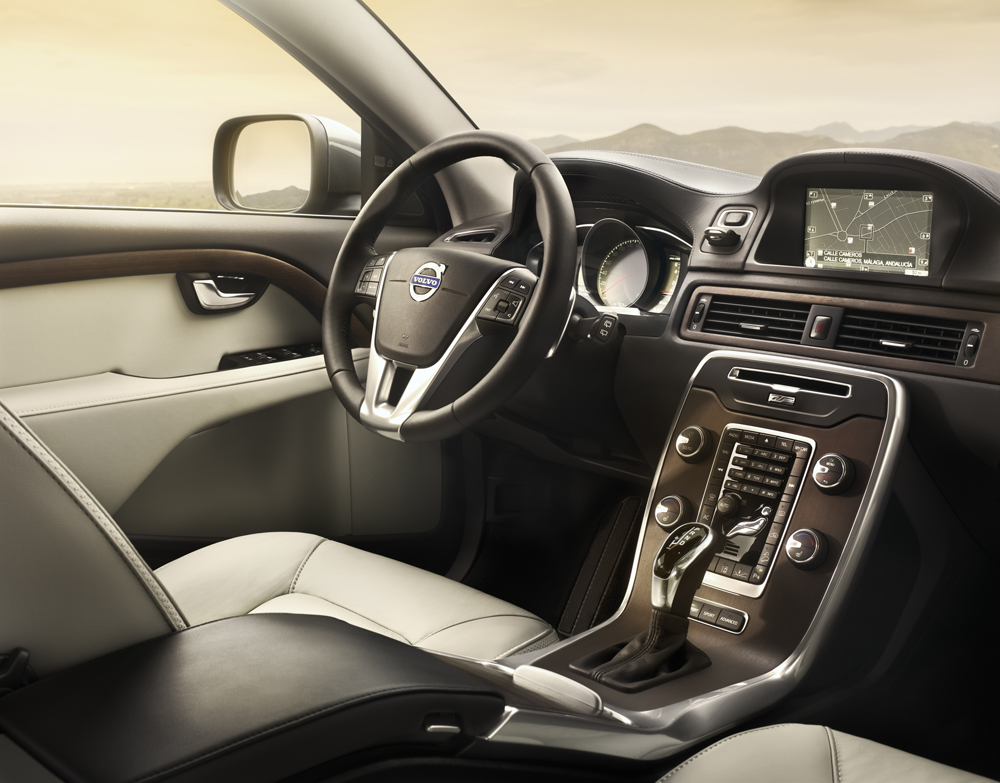
Adaptive Digital Display
This active TFT (Thin Film Transistor) crystal display takes the interaction between car and driver to a new dimension, always displaying the most important information in any given situation.
The driver can choose between three graphic themes:
- The Elegance theme offers a more traditional appearance.
- The Eco theme features green background illumination, designed to create an environmentally inspired look. An Eco meter is displayed on the left. The current and accumulated fuel consumption figures are displayed – and the driver is rewarded with a green E light when eco-driving is optimal.
- The Performance theme has red background illumination, creating a sporty atmosphere. In the centre, a rev counter scale replaces the speedometer displayed in the Elegance and Eco versions. Vehicle speed is shown digitally in the center of the display. The right display includes a power meter – a gauge that informs the driver how much power is available and how much power is being used at any given moment in time.
Quicker acceleration with Advanced Quick Shift
Advanced Quick Shift (AQS) is transmission optimization software that improves the speed of each gear change. This new feature is now available on all T6 engines and activated when the transmission is set to sport mode or when using paddle shifters. Gear changes are faster by as much as 50 percent between first and second, and as much as 30 percent on gear changes two through six.
This bolsters the sporty impression of the T6 and also produces fantastic acceleration results. Zero to 60 improves 0.4 seconds on the XC70 T6 AWD – from 6.9 to 6.5 on model year 2014 with AQS – while the S80 T6 AWD runs 0.3 seconds faster – 6.3 to 6.0 seconds on model year 2014 with AQS – compared to model year 2013.
More relaxed driving in the dark
Inside, an all-new Ambient Light enhances driving at night. It illuminates key features such as cup holders, door releases, seat controls, and luggage and storage areas. Cars equipped with the automatic gearbox also feature a new gearshift knob with piano-black inlay.
Heated windscreen and steering wheel
And for the added comfort of drivers in cold countries, the steering wheel can also be specified with heating for increased comfort on cold winter days.
Cars equipped with a rain sensor can now benefit from an electrically heated windscreen for rapid de-icing on cold winter days. To give drivers in cold climate extra comfort, three-spoke steering wheels can now be specified with electric heating.

IntelliSafe systems supporting the driver
IntelliSafe, Volvo’s blanket name for all active safety systems, is an important part of the driver-centric approach in the S80 and XC70.
The world-first City Safety technology is fitted as standard, and this advanced safety system now works at speeds of up to 31 mph. Both models can also get Pedestrian Detection with full auto brake, which watches out for people walking into the car’s path, as well as the new and groundbreaking Cyclist Detection with full auto brake, which detects and automatically brakes for cyclists swerving out in front of the car.
Road Sign Information supports the driver by displaying road signs on the instrument display.
“As the leader in automotive safety, we have reduced the risk of being involved in an accident or being injured in one of our latest car models by about 50 percent since the year 2000. By continuously introducing new preventive and protective systems, we keep moving toward our safety vision that nobody should die or suffer serious injuries in a new Volvo car by the year 2020,” says Thomas Broberg, Senior Safety Advisor at Volvo Car Group.
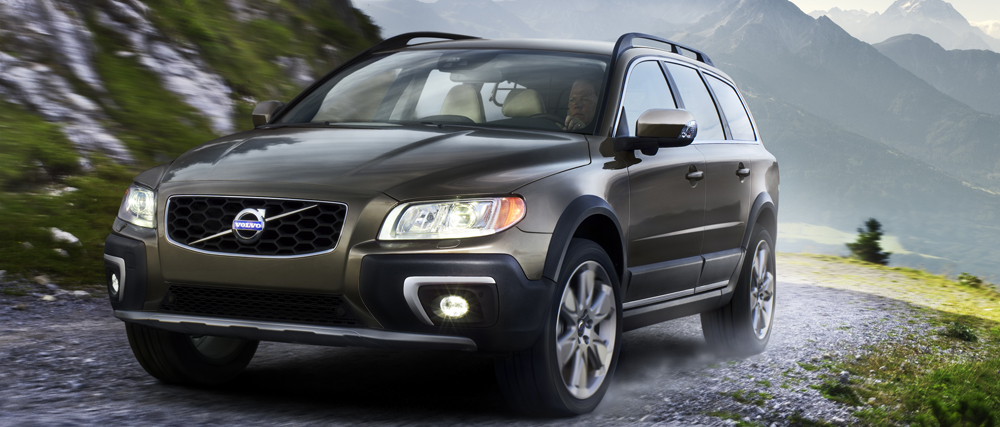
THE NEW VOLVO DRIVE-E POWERTRAIN FAMILY – WORLD-LEADING ENGINE OUTPUT VERSUS CO2 EMISSIONS
Volvo Car Group’s new two-litre, four-cylinder Drive-E powertrain family can truly be considered as offering customers a world-class blend of drivability and low CO2 emissions. The D4 with 181 horsepower and manual gearbox is the first diesel car with this level of power output in the premium D-segment with CO2 emissions under 100 g/km.
The Volvo S60 T6 FWD with 306 horsepower and the new 8-speed automatic is the first car in the segment that delivers over two horsepower per gram of CO2 from a combustion engine only. The car accelerates from 0-62 mph in 5.9 seconds.
“During the development phase of our Drive-E powertrains, we promised to bring efficient driving pleasure into a new dimension. The official European NEDC certification now confirms that we outperform competitors when it comes to power versus CO2 emissions,” says Derek Crabb, Vice President Powertrain Engineering at Volvo Car Group.
The new D4 FWD can be ordered now and is available in the new S60, V60, XC60, V70, XC70 and S80. It is also available to order with the new 8-speed automatic. The new T6 engine is expected to be available during 2014.
Class-leading diesel at 99 g/km
The Volvo S60 D4 with 181 horsepower and manual gearbox has class-leading CO2 emissions at 99 g/km, which translates into fuel consumption of 74.3 mpg. A Volvo V60 D4 with up to 17-inch tyres also breaks the 100-gram barrier according to the NEDC certification with CO2 emissions the same as its’ sister saloon at 99 g/km.
The Drive-E diesels feature world-first i-ART technology with pressure feedback from each fuel injector instead of using a traditional single pressure sensor in the common rail. Each injector has an intelligent chip on top of it that monitors injection pressure. Using this information, the self-adapting i-ART system makes sure that the ideal amount of fuel is injected during each combustion cycle.
“The combination of injection pressure at 2,500 bar and i-ART technology gives the customer an engine with high performance, improved fuel economy and considerably lower emissions. It is a breakthrough comparable to our invention of the lambda sensor for the catalytic converter in 1976,” says Derek Crabb.
Petrol engine with compressor and turbo
The new two-litre, four-cylinder T6 engine features both a supercharger and a turbo charger. Using the supercharger to fill in the bottom end torque gives the petrol engine a big, naturally aspirated feel. The mechanically linked compressor starts to function immediately at low revs, while the turbocharger kicks in when the airflow builds up.
“We have created a range of smaller, more intelligent engines with power curves that give exciting driveability compared with engines with more cylinders. At the same time we continue to reduce fuel consumption and CO2 emissions,” says Derek Crabb.
Prepared for electrification
The Drive-E engines are prepared for future electrification from the start. The compact size of the four-cylinder engines means that the electric motor can be fitted in the front or rear of the vehicle. The battery pack will be located in the centre of the car.
“The success of our V60 Plug-in Hybrid has also proved there is no contradiction between driving pleasure and low emissions. And we have already confirmed that the all-new XC90 will be introduced in 2014 with a petrol plug-in hybrid at the top of the range,” says Derek Crabb. He concludes: “The first Volvo car back in 1927 featured a two-litre, four-cylinder engine. So you can safely say that the new Drive-E powertrain family remains true to our heritage.”
